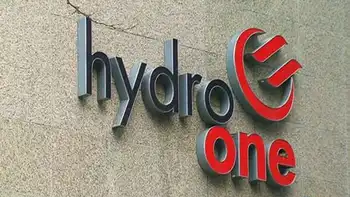Assembly passes wind-power bill
By Baltimore Sun
Substation Relay Protection Training
Our customized live online or in‑person group training can be delivered to your staff at your location.

- Live Online
- 12 hours Instructor-led
- Group Training Available
The House of Delegates and Senate passed identical versions of the bill by overwhelming margins. Gov. Martin O'Malley is reviewing the proposed legislation and is inclined to sign it into law, his spokesman, Rick Abbruzzese, said recently.
"I think the governor feels that Maryland has to play a leadership role in alternative energy sources," Abbruzzese said. "We will work to find the appropriate balance between the new sources of energy and their environmental impact."
Advocates for wind power believe a less cumbersome permit process could jump-start nascent efforts in Western Maryland to build the state's first gust-driven turbines, which are slated to rise to heights of 400 feet across cleared forest. Four mountaintop projects are in the works but have not gotten off the ground in Allegany and Garrett counties.
"It's an important reform," said Frank Maisano, a spokesman for a coalition of wind-energy developers in the Mid-Atlantic region, including at least two companies with projects in Maryland. "They've just helped us streamline the process a little."
Under current procedure, wind-energy proposals in Maryland must get the same permits from the Public Service Commission that are required of coal-fired power plants. The process is completed with a "certificate of public convenience and necessity."
The commission's review examines the environmental and visual impact of turbine construction. But under the bill, this undertaking would be eliminated, and wind turbines would be freed from the certificate requirement.
Maisano said the bill would not ease the permit process for offshore turbines, an idea that opponents fear could spoil the scenic views and ecosystem of the Chesapeake Bay.
According to advocates, the bill passed by the General Assembly will eliminate duplicate reviews of turbine proposals that had prevented such projects from receiving approval. The House did amend the bill to keep a public hearing requirement for any turbine plan, Maisano said.
Opponents, largely drawn from the state's leading environmental groups, decried the bill's passage, arguing that pollution-free wind turbines will be unsightly and likely harm some of the state's most endangered species.
They added that the public's ability to block or modify plans for 40-story turbines on cleared mountaintops will be severely curtailed by the legislation.
"I think it's one of the worst environmental bills I've ever seen," said Bob DeGroot, president of the Maryland Alliance for Greenway Improvement and Conservation. "It's going to prevent anyone from contesting miles and miles of turbines along mountaintops in Western Maryland."
D. Daniel Boone of Bowie, a former state Department of Natural Resources wildlife manager, said the legislation is a bad idea because "it takes away a citizen's right to be a participant in a meaningful way when it comes to land use that's going to spread across a large area of land."
Other opponents included the Chesapeake Bay Foundation and the Maryland Conservation Council. Supporters of the bill had a prominent friend in wind-energy developer Wayne Rogers, former chairman of the Maryland Democratic Party and chairman of O'Malley's transition committee on energy issues.
Wind-energy promoters said the bill dovetailed with other recent state environmental initiatives, including tax credits and grants for renewable energy. Earlier in the legislative session, the General Assembly passed a measure dubbed the "clean cars bill," which would require stricter tailpipe emissions standards for passenger vehicles sold in the state.











